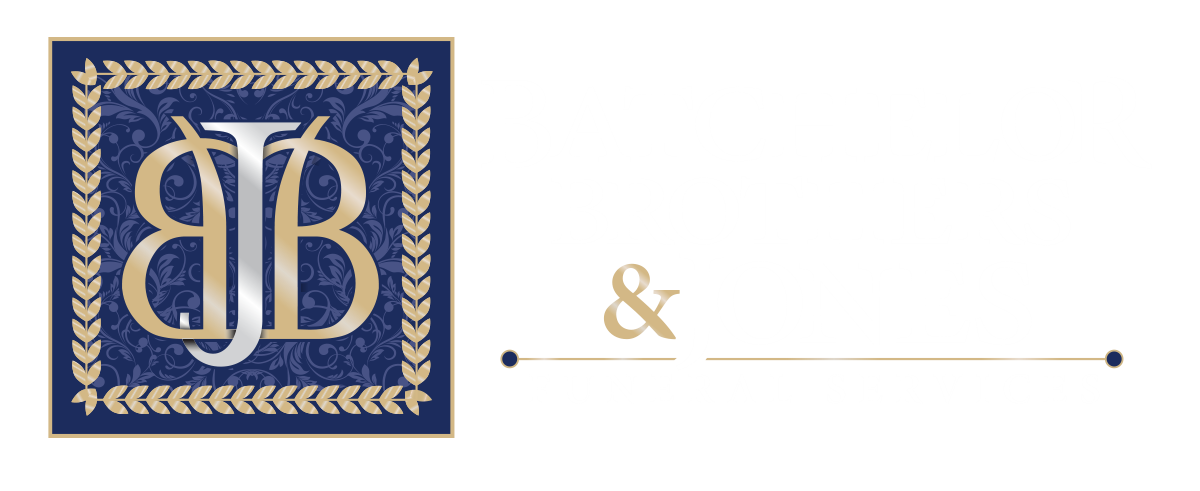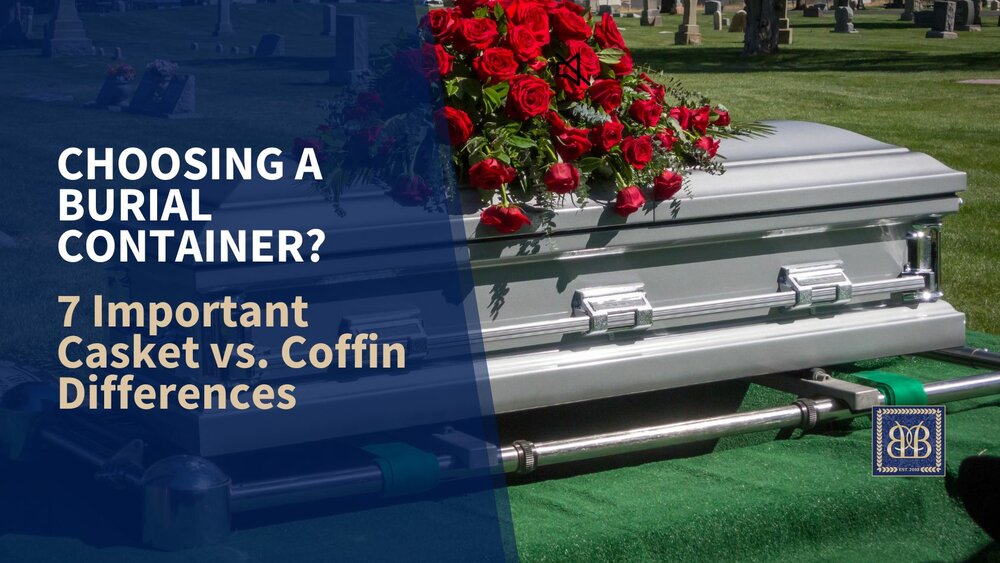Choosing a Burial Container? 7 Important Casket vs. Coffin Differences
If you’re unsure which burial container to choose, understanding casket vs. coffin differences is a helpful first step.
When you're planning a funeral, every decision is important. From the type of service to the choice of flowers, each element helps tell the story of your loved one’s life. At Batchelor Brothers Funeral Services, we are often asked, “What’s the difference between a casket and a coffin?”
Although these terms are sometimes used interchangeably, caskets and coffins are not the same. They have the same purpose but differ in shape, construction, and tradition. Understanding these distinctions can help you find a burial container that feels right for you and your family. Below, we outline seven key casket vs. coffin differences to help you make an informed decision during an emotional time.
1. Shape and appearance
The most obvious difference between a casket and a coffin is the shape. Coffins have a traditional, six-sided design. They are widest at the shoulders and gradually narrow toward the feet, mirroring the natural shape of the human body. This timeless design has been used for centuries and is still chosen today for its simplicity and symbolism.
Caskets have a four-sided, rectangular shape with straight lines and sharp corners. This uniform, symmetrical look is more commonly seen in modern American funerals. Many people find the shape of a casket to be more polished and formal in appearance.
2. Lid construction
Caskets and coffins also differ in how they open. Coffins usually have a single, flat lid that is fully removable rather than hinged. This style is more traditional and is often used in funeral services that do not include a public viewing. If a viewing is desired, the lid is removed beforehand and replaced afterward.
A casket typically has a hinged lid, often split into two sections. This allows the upper half to be opened for viewings or visitations, a common practice in many American funeral traditions. Some families choose to open both sections, depending on their preferences and the type of service.
3. Interiors and decorative elements
Coffins tend to have a modest interior and exterior. They may be made of simple wood or metal and usually have minimal detailing. This doesn’t make them less meaningful—many families find comfort in the simplicity and understated elegance of a coffin.
Caskets are often chosen for their refined interiors and customizable features. Most come lined with cushioned fabric and may include adjustable bedding, headrests, or detailed trim. Exterior finishes can range from sleek and simple to ornate and decorative, offering families a variety of personalization options.
4. Emotional associations
The words we use are important, especially during times of grief. In the United States, the term casket has become more common in funeral settings. It’s often associated with grace, respect, and a sense of peace. The term coffin can feel more serious or old-fashioned. For some, it may bring to mind horror movies or dark imagery. That said, neither word is right or wrong—it’s a matter of what resonates most with your family and cultural traditions.
5. Cultural preferences and geographic norms
In the U.S., caskets are more commonly used and readily available through funeral homes. This trend began in the 19th century as the American funeral industry evolved and has remained the standard ever since. Most funeral homes, including Batchelor Brothers, offer a wide selection of caskets in different styles and finishes.
Coffins, while less common today, are still available and may be preferred for religious, cultural, or personal reasons. They can be purchased through select providers or custom-built in some cases. If your family prefers a coffin, we are happy to discuss options and coordinate any special arrangements you may need.
6. Transport and handling differences
Though it may seem like a small detail, how a burial container is carried can affect the overall logistics of a funeral. Caskets usually come with long side rails that allow pallbearers to lift and carry the container evenly and comfortably. These rails run the length of the casket and provide a secure grip for all six pallbearers.
Coffins, in contrast, are typically designed with individual handles on each side. While still functional, this design can change how the container is handled during the service and transport. It’s a difference worth considering when planning the flow of the ceremony.
7. Personal preference and symbolism
Ultimately, the choice between a casket and a coffin often comes down to personal choice. Some families are drawn to the traditional look and symbolism of a coffin. Others like the elegance, symmetry, and customizable details of a casket. There is no right answer, only what feels most fitting for your loved one and your family’s values.
Selecting a burial container is a deeply personal part of the funeral planning process. At Batchelor Brothers Funeral Services, we are here to offer gentle support every step of the way. We offer a wide selection of burial containers to accommodate a variety of preferences. Whether you want something classic and understated or unique and carefully crafted, our caring team will help you find the right option to reflect your loved one’s life and legacy.
If you would like more information about casket vs. coffin differences, or if you wish to make arrangements for a loved one, please contact us anytime.
About Batchelor Brothers Funeral Services: As a leading African American-owned and operated funeral and cremation organization, Batchelor Brothers Funeral Services has provided a ministry of care to thousands of grieving families. We promise to provide our highest level of distinguished service and respect to families who entrust us to honor their loved ones. With two convenient locations serving North and West Philadelphia, it is always our pleasure to be of service. For more information about our funeral, cremation, memorial, repast, and grief counseling services, please visit batchelorbrothers.com.







Comments